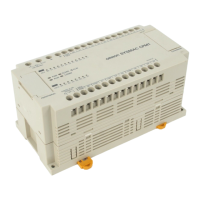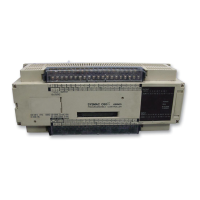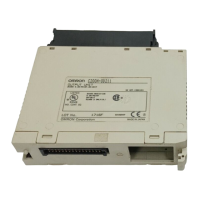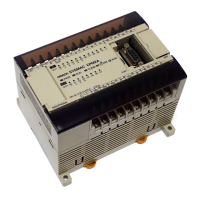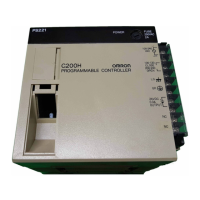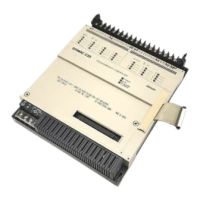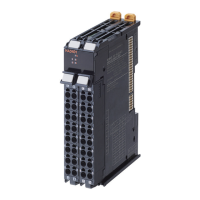95
have a duty factor of 1:1, and the reset signal must have an ON time of at
least 250 µs, as shown below.
150
µs
Input
0000
150
µs
250 µs min.
Input
0001
Inputs 0000 and 0001 can be used as normal inputs when CNTH(24) is not
used, but the input signals must be 1 kHz max. (500 µs wide min.).
Do not use the 0001 reset input in combination with other input bits in the
reset execution condition.
0002
SI
R
CNTH(24)
CNT13
#0150
0003
0004
0001
Incorrect
0002
SI
R
CNTH(24)
CNT13
#0150
0001
Correct
0002
SI
R
CNTH(24)
CNT13
#0150
0003
00010004
0002
SI
R
CNTH(24)
CNT13
#0150
0003
0004
Flags ER: The Error Flag (0311) will be turned ON when the SV is not BCD.
The instruction will be executed, but operation will not be reliable.
In the following example, the PV will be incremented whenever the count
pulse, 0000, goes from OFF to ON provided that the start input, 0002, is ON
and the reset input, 2003 is OFF. When 150 pulses have been counted (i.e.,
when the PV reaches the SV), the Completion Flag, CNT 13, and 0101 will
be turned ON.
0002
SI
R
CNTH(24)
CNT13
#0150
2003
0101
CNT 13
Address Instruction Operands
000 LD 0002
001 LD 2003
002 CNTH(24) CNT 13
# 0150
003 LD CNT 13
004 OR 0101
005 OUT 0101
0101
Precautions
Example 1:
Basic Application
Instruction Set Section 3-7
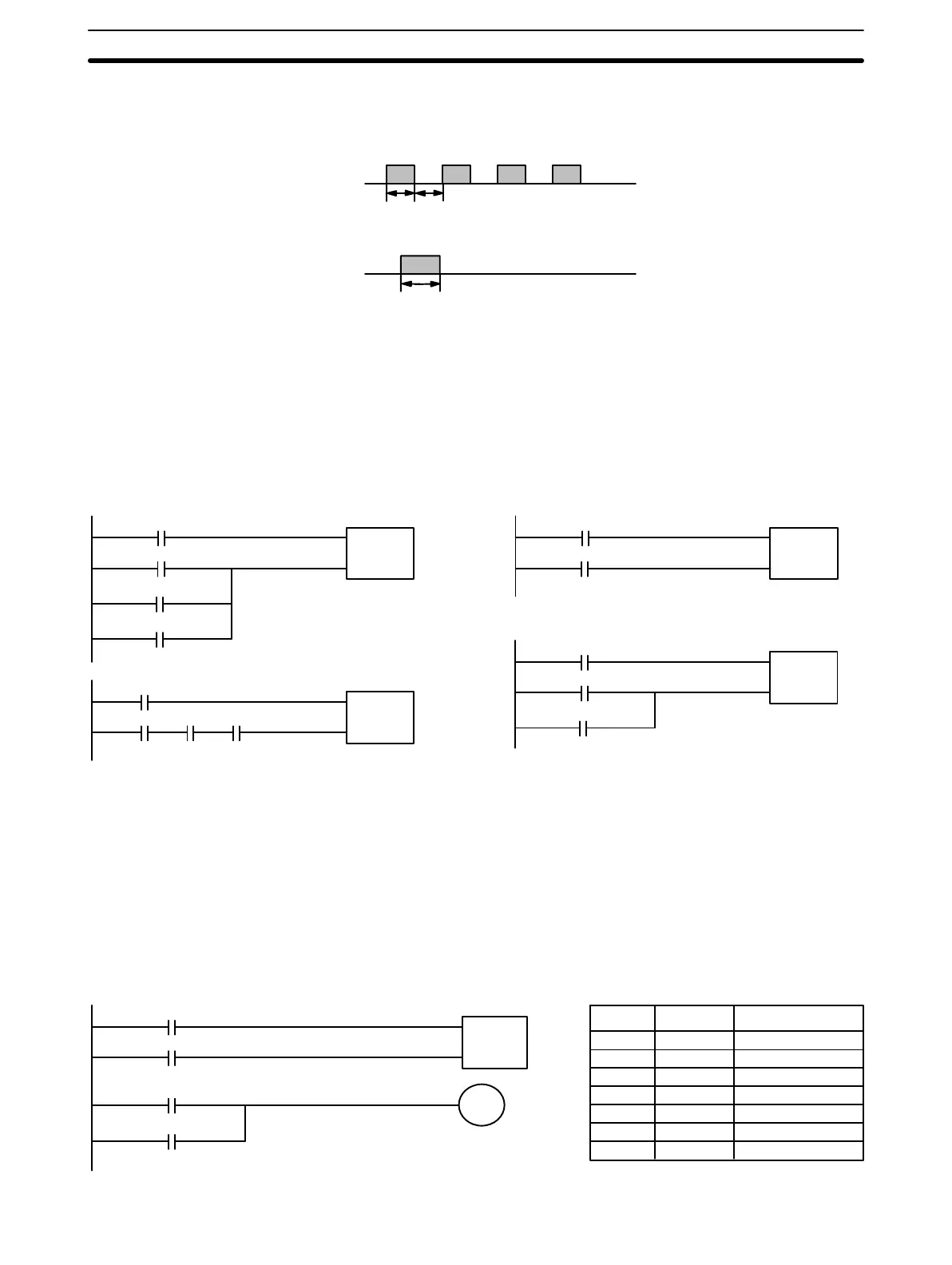